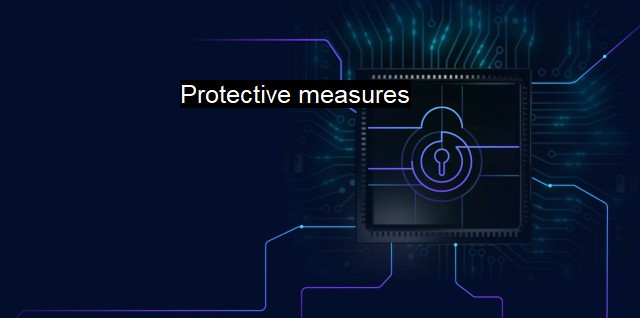What are Protective measures?
Enhanced Protection: Exploring the Vital Importance of Protective Measures in Cybersecurity and the Vital Role of Antivirus Software
"Protective Measures" are essential procedures, methodologies, or tools meant to thwart or lessen the potential damage caused by various forms of cyber threats. As more people worldwide continue to gain access to the internet and the use of digital devices grows, the need to enhance these protective measures increases. On the internet, these threats are pervasive as they include viruses, malware, phishing schemes, ransomware, Identity theft, denial of service (DOS), and myriad other Trojan horse programs that cyber attackers use ingeniously to achieve many nefarious objectives.One primary protective measure used in cyber security is antivirus software. It’s basically used to prevent, detect, and remove different types of malware like worms, spyware, adware, and ransomware. Antivirus software has evolved massively, and modern incarnations are not only tasked with removal of malicious software. They come with features that can detect phishing attacks, spam filters, VPN, browser protection, and more. The better the antivirus software, the higher the possibility of detecting the ingrained threats in an information system, thereby offering higher security to the integrity of the entire system resources.
Another equally important measure is the implementation of firewalls. A firewall is esse.tially a security system that observes and controls incoming and outgoing network traffic. Based on predetermined security rules, firewalls create a barrier between a trusted and an untrusted network. They prevent unauthorized users from accessing private networks connected to the internet, especially intranets.
Regular updates and patch management is yet another crucial element of cybersecurity. Companies, developers, or creators often release software and system updates to fix inherent vulnerabilities or issues in the system. Cybersecurity protective measures, therefore, necessitate rigorous application of these updates to keep systems safe from hackers who seek to exploit these security loopholes. In a responsive approach, known as patch management, frequent checks for system updates and installation of patches help secure the firewall against intrusion.
Another layer of protection is provided by multi-factor authentication (MFA). MFA includes more than one piece of evidence or credentials presented by a user in order to gain access to the data or resource. With MFA, the chances of unauthorized entities gaining access to data or resources drop significantly as it adds multiple layers of complexity to the authentication process.
Encrypting sensitive data is another fundamental cybersecurity protective measure. By jumbling information, encryption ensures that data cannot be easily interpreted or understood if intercepted or compromised. Only a system or user with the right encryption key can access the hidden information.
Other important protective measures in this domain include internet use training and education, use of secure and complex passwords, adopting a robust backup strategy to recover systems and data, and the institution of cyber insurance in case worst-case scenarios manifest.
The complexity and growth of cybersecurity threats have necessitated the evolution of more superior and intricate protective measures. Whilst previously antivirus software and firewalls were adequate, new protective tools have since mushroomed such as Artificial Intelligence (AI) and Machine Learning (ML) technologies that identify threats by recognizing data patterns. It is the consistent refinement of these measures, along with aggressive education for internet users, that will progressively ensure safer spaces in cyberspace. With an army of deceptively simple and complex threats preying continually, protective measures in this context are absolutely essential and integral for a safer future.

Protective measures FAQs
What are protective measures in cybersecurity?
Protective measures in cybersecurity refers to strategies or tactics put in place to safeguard computer systems, networks, and other digital devices from unauthorized access, cyberattacks, and other forms of malicious activities.How can antivirus software protect my device from cyber threats?
Antivirus software helps to protect your device from cyber threats such as viruses, malware, and ransomware by scanning and detecting any suspicious activities on your device. The software then blocks or removes any identified threats before they can cause harm to your device.What are some examples of protective measures in cybersecurity?
Examples of protective measures in cybersecurity include implementing strong passwords, regularly updating software and operating systems, using antivirus software, using firewalls, and practicing safe browsing techniques.Why is it important to have protective measures in place for digital devices?
It is important to have protective measures in place for digital devices because cyber threats are becoming more sophisticated and prevalent. Without proper protection, devices can easily become vulnerable to cyberattacks, which can result in data breaches, financial loss, and other forms of damage. Protective measures help to mitigate the risks associated with cyber threats and ensure that devices remain secure.| | A | | | B | | | C | | | D | | | E | | | F | | | G | | | H | | | I | | | J | | | K | | | L | | | M | |
| | N | | | O | | | P | | | Q | | | R | | | S | | | T | | | U | | | V | | | W | | | X | | | Y | | | Z | |
| | 1 | | | 2 | | | 3 | | | 4 | | | 7 | | | 8 | | |||||||